What's New
Displaying results 3421 - 3430 of 4922

Resource | Presentations,
Presentation presented at the 7th IAS Conference on HIV Pathogenesis, Treatment and Prevention
Date: July 2, 2013
Place: Kuala Lumpur, Malaysia
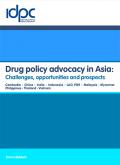
Resource | Publications,
This report was commissioned by the International Drug Policy Consortium (IDPC), with the support of Australian Aid, for the purpose of developing a better understanding of drug policy advocacy activity in 10 Asian countries: Cambodia, China, India, Indonesia, Lao PDR, Malaysia, Myanmar, the Philippines, Thailand, and Vietnam. It aims to achieve three goals:
- Identify organisations engaged in harm reduction and drug policy advocacy
- Identify gaps and challenges in harm reduction and drug policy advocacy that remain to be addressed
- Develop recommendations for prioritising new activities in harm reduction and drug policy advocacy
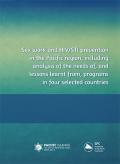
Resource | Publications,
Pacific Island countries and territories (PICTs) are diverse; political regimes, cultural norms and languages vary widely. The forms of sex work undertaken across the Pacific are as diverse as the social, economic and political contexts in which they are situated. Reliable information on sex work in PICTs is fragmented and incomplete. However, characteristic forms of sex work include: paid sex with seafarers, women boarding boats, and the provision of sex to affluent locals, tourists, business travellers or migrant workers. Sex work typically occurs around ports and transit hubs, in development or construction enclaves and near military installations. Most sex work is informally organised and sex workers operate independently, although in Guam and Palau sex work is managed from within other entertainment establishments. Significant levels of sex work have been documented in Port Moresby, Honiara, Suva, Guam and Saipan, but various forms of sex work take place throughout the region.
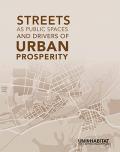
Resource | Publications,
It is well known that without sufficient street networks provision of basic services is virtually impossible. Recognizing the importance of the urban form, in 2004 UN-Habitat introduced the Monitoring Urban Inequities Programme (MUIP) that aims to collect and analyze crucial information on the layout and planning of cities. Under the MUIP, a community profile was designed in association with other modules of an Urban Inequity Survey (UIS). The community profile, supported by GIS, provides crucial information on the urban form, including the street network as a key element of public space. It also collects qualitative information through focus groups that reflect people’s opinions on infrastructure, social networks, security, etc.
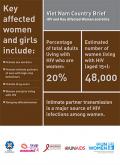
Resource | Reviews and Snapshots,
These country briefs synthesize some of the current available data and evidence on key affected women and girls into one, easy-to-read report. For the first time, available data and research on national AIDS responses as it specifically relates to key affected women and girls were collated and carefully reviewed together, to improve understanding of women and girls most at risk of, and most affected by, HIV in the region.
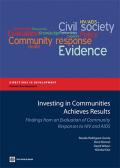
Resource | Publications,
Before the scale-up of the international response to the AIDS pandemic, community responses in developing countries played a crucial role in providing services and care for those affected. This study is the first comprehensive, mixed-method evaluation of the impact of that response. The evaluation finds that community response can be effective at increasing knowledge of HIV, promoting social empowerment, increasing access to and use of HIV services, and even decreasing HIV incidence, all through the effective mobilization of limited resources. By effectively engaging with this powerful community structure, future HIV and AIDS programs can ensure that communities continue to contribute to the global response to HIV and AIDS.
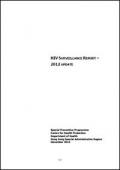
Resource | Publications,
The HIV surveillance system in Hong Kong comprises 5 main programmes to provide a detailed description of the local HIV/AIDS situation. They are (a) voluntary HIV/AIDS case-based reporting; (b) HIV prevalence surveys; (c) sexually transmitted infections (STI) caseload statistics; (d) behavioral studies; and (e) HIV-1 genotyping studies. The data is collected, analyzed and disseminated regularly by the surveillance team of Special Preventive Programme (SPP), Centre for Health Protection (CHP), Department of Health (DH). At present, the latest HIV/AIDS statistics are released at quarterly intervals at press media briefings and in electronic format (http://www.aids.gov.hk). Data from various sources are compiled annually and released in this report.
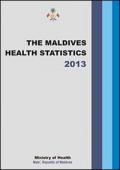
Resource | Publications,
The Maldives Health Statistics is published with the main objective of providing easy access to up-to-date comprehensive statistical information on various aspects of health. The publication is divided into several subsections. This publication also includes updates and revisions of the data published in previous years.
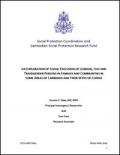
Resource | Publications,
Social Exclusion on the basis of gender identity and sexual orientation (SOGI) is complex and may not be readily acknowledged by authorities. Other factors that can influence exclusion are poverty, illiteracy, lack of awareness about social protection mechanisms and how these can be accessed, some religious practices, cultural norms about males and females, husbands and wives, and families, and type of occupation (such as sex work); however SOGI‐based exclusion appears to be a major cross‐cutting feature that cannot be disregarded. Many LGBT are mobile and even while living together with a partner in a stable relationship, they are not officially and legally recognized as partners, a husband‐wife team, a couple, or as a family.
The study makes recommendations for policy‐makers, program planners and project implementation to consider Sexual Orientation and Gender Identity (SOGI) as crosscutting factors that can influence participation, delivery of social services, and access to education, work opportunities and justice. Awareness and Education activities on SOGI support for informal groups and associations, as well as areas for further research are recommended.
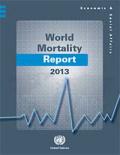
Resource | Publications,
The World Mortality Report 2013, prepared by the Population Division of the Department of Economic and Social Affairs of the United Nations Secretariat, assesses changes in mortality risks at the global, regional and country levels, focusing in particular on the implementation period of the Programme of Action of the International Conference on Population and Development, from 1990-1995 to 2010-2015. The report reviews the survival targets outlined in the ICPD Programme of Action and discusses them in the context of other internationally agreed mortality reduction goals, including the Millennium Development Goals. It evaluates the progress of regions and countries with respect to life expectancy at birth, child mortality, mortality in the reproductive and working ages, and life expectancy at advanced ages and discusses the contributions of improvements in survival at different stages of life towards the achievement of the ICPD survival targets. Disparities in progress towards those targets are partially explained by examining differences between selected countries in the sex and age patterns of mortality reduction. Some priorities for future reductions in mortality risks are discussed.





